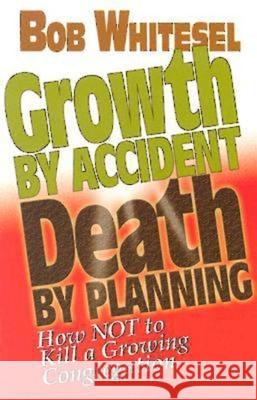Growth by Accident, Death by Planning: How Not to Kill a Growing Congregation » książka
Growth by Accident, Death by Planning: How Not to Kill a Growing Congregation
ISBN-13: 9780687083251 / Angielski / Miękka / 2004 / 176 str.
Growth by Accident, Death by Planning: How Not to Kill a Growing Congregation
ISBN-13: 9780687083251 / Angielski / Miękka / 2004 / 176 str.
(netto: 84,14 VAT: 5%)
Najniższa cena z 30 dni: 87,86 zł
ok. 16-18 dni roboczych
Bez gwarancji dostawy przed świętami
Darmowa dostawa!
It is a familiar experience. A congregation that had been growing in numbers and spiritual vitality reaches a plateau and then begins to decline. Most of the time, the plateau occurs long before the church arrives at the optimum number of members it hoped to attract. What has happened here? Why does growth slow down, stop, and then decline? The real question to ask, says Bob Whitesel, is why the church grew in the first place. Most of the time young, growing churches make a series of decisions based not upon careful planning and analysis, but rather upon necessity and intuition. Thus these decisions are not planned strategies, but strategies that often occur by accident, owing their genesis to circumstance. These unplanned strategic decisions are driven not by knowledge, but often simply by the church's environment. When that growth slows, these same churches begin to engage in more careful planning. The problem is that this planning so often ignores the considerations and decisions that led to the church's growth to begin with. The result is stagnation and eventual decline. In the plain, direct style that is his hallmark, Whitesel lays out where churches go wrong in their planning for growth and how they can correct themselves. He does so by looking at three related phenomena: first, the factors that cause initial growth; second, the erroneous decisions that lead to getting stuck on the plateau; and finally, corrective steps that churches can take to regain growth and vitality.











